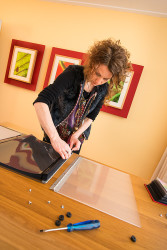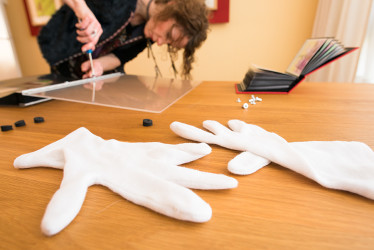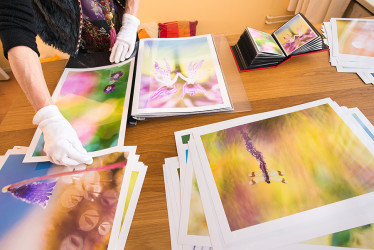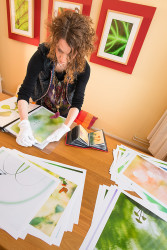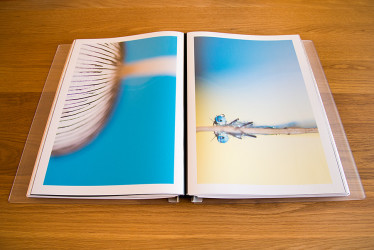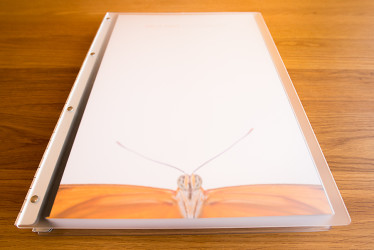Nowadays, when you talk about a photographic portfolio, people automatically think about a digital portfolio. Your best selected pictures on a screen, on your computer or on social media platforms. That’s all fine of course, but today I’m talking about the real thing, about a printed portfolio.
I come from the analogue era. When I started with photography ( some 22 years ago…) I mostly shot with black and white films. I developed these films myself and I printed my own pictures. I learned among others about contrast and density. I knew the films, the grains, and the papers. I knew the effects of a thin or heavily exposed negative upon the final photo. And no, I for sure did not like the smelly and unhealthy chemicals nor did I like the dark. But I was in touch with my photos from the beginning till the end and that felt good.
Of course I also did some color shooting back in these days. The processing of color negatives and the printing of color photos was however too expensive and complicated to do by myself, so I had to outsource these handlings. The print results often were disappointing though. The negative was something you couldn’t edit so it was kind of limited. The photo lab often used corrections you had no control about. Therefore I was relieved when finally the digital cameras showed up. Especially since in the meanwhile my preference for color photography had grown. Now I could shoot and edit my own color pictures. The thing is that the processing of the images was often limited to the digital editing of my files. The need for prints became less important because with the digital cameras there came the computer and the internet instead to show my pictures. The photos therefore only seldom were printed on paper. In other words, in the end the process was not complete and I had lost touch with my final prints.
And then there was this colleague at work who frightened me with terrible stories about our digital photographic future. Now I don’t want to scare you but there could be a possibility that somewhere in the future we can not open our precious and well preserved digital files anymore, for all kind of reasons. Gone are all your photos. Unless of course…. you have decent prints of them. The traditional prints could therefore be a very important form of back-up or rescue. I slightly panicked there. OK, this was it. Now there was no escape anymore. I had to print my own portfolio. And so I did…
The first thing, the selection of my pictures, was great fun. How nice is it to sit behind your pc and see all your favorite pictures of the last 13 years or so pass by. In addition to the selection there was also some re-editing to do. Also very much fun. Then there was the printing. I figured I wanted the best possible print so I made some tests with different photo labs including the one where I work. Now as you might know my photos contain a lot of ‘blurry’ parts. These ‘blurry’ parts turned out to be really difficult to print. The test results showed that the well-known Durst Lambda print on Fuji Christal Archive paper gave the best results. Unfortunately it took me some time (three months) to receive all prints from the extern photo lab without stripes in the print or scratches on the surface of the paper. When it comes down to the final prints, they have to be good of course. I already knew I am a very precise person, now the photo lab knows too… 😉 And last but not least there is the portfolio presentation album. I had almost given up hope to find a real good looking one till the same colleague as before showed me the albums of Pina Zangaro. No more old-fashioned black canvas but modern light design. I chose for the semi transparent Vista Mist version in A3 portrait format, which is made of acryl and aluminium material.
I am very happy with my portfolio now. I can only recommend every serious photographer to print one as well. It takes you some time, effort and money but it pays off so well.
All pictures were taken by Edwin Giesbers.



